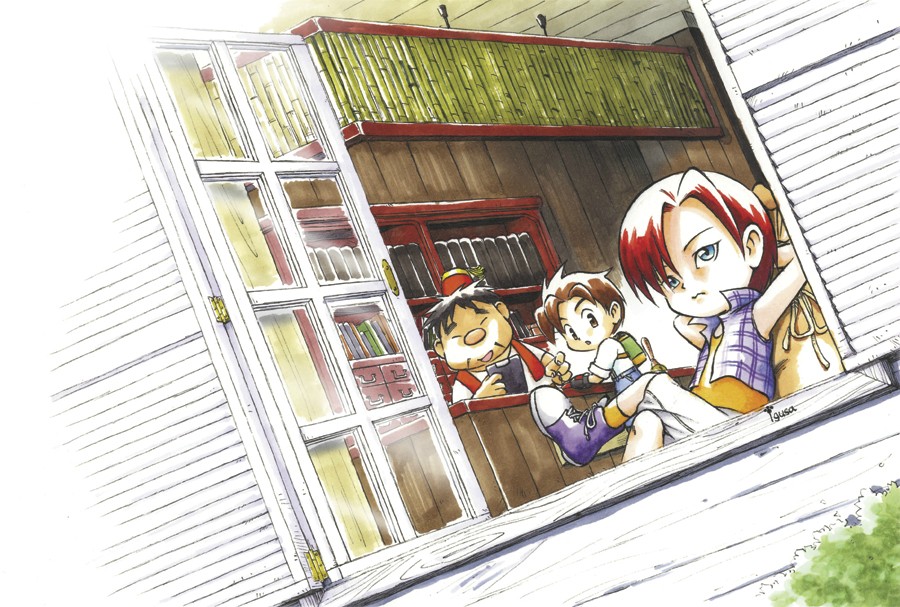Life isn’t static. As time passes, people change.
In games like Stardew Valley and Harvest Moon, the passage of time is a major event, which brings with it a change in seasons, changes in available crops, and huge climate shifts around the nearby villages. As the years pass, these little changes build up. Villagers come and go, life’s quirks change with the seasons, and the passage of days change the world around them.
The people in these villages aren’t static either. They build relationships themselves, both with and unrelated to the protagonist. They grow their lives in ways that change who they are, how they interact with the world, and how they feel about life in general. As in life, these things aren’t set in stone, and the things that may endear someone one day may become exhausting the next.

Which is to say that relationships need to develop in more than just in name. What makes a relationship work varies a lot from relationship to relationship, but mechanical relationships make for dry interactions. In order for the connection to develop at all, there needs to be some element of development there, something that builds the compatibility between the people in it, and develops into something strong.
Games, as discussed last week, are built on systems rather than connection. These systems are very effective at making the steps of pursuing a relationship easy to access. These steps could be fit in a few sentences in an instruction manual, or tacked into a paragraph of prelude to a Wiki page, and don’t require much for a player to learn what it would take to start toward a goal. What this technique gains in simplicity, it loses in depth. A relationship that’s constructed entirely on systemic, step-by-step instructions won’t create a rapport and complexity that follows in the wake of non-digital relationships. A person has far fewer limits in their hobbies, interests, complexities, and connections than an avatar of one would. As a result, relationships in these systems struggle find ways to grow.
This is something that games like Harvest Moon touch on, but don’t develop any further. The challenge is making something based on almost nothing, the exchange of dialog and gifts, into something that grows from a tangled string of experiences. The shared conversations, the in-jokes that spawn from mistakes or happenstance, the developed closeness that results from a life lived, with all its ups and downs. A farmer and his wife, for instance, might talk about more than the weekly weather, the goings-on in town, or the one thing their toddler did this past week. In Harvest Moon, the player’s wife will only be able to speak on the things the mechanics enable, make dinner for the farmer between the hours of 16:00 and 22:00, and gain or lose hearts as the system requires.
These are constants: mechanical aspects of the game that the player can’t really influence. After a number of days married, the wife will have children. After a number of days, the child will age. After another string of days, the wife will have another child. During this time, the game selects the weather, the seasons pass, and the only things that change the wife are the system. The player, short of outright neglect, has no influence on the happiness or behavior of the wife.
Stardew Valley actually improves on this formula by allowing the development of the partner as something beyond. Sometimes they’ll cook, or they’ll wake before the player-character and water the crops, or they’ll tend to the animals. Things are supportive behaviors, and by including them, it gives an extra layer of humanity to the relationship, meaning the player gets someone who can support them, even in small ways, to help make the going less challenging, even if for just a day. For even such a little thing, it makes the relationships feel less cold and distant.

Having partners grow based on time spent with one another is a step in right direction for making in-game relationships feel more personal and unique to the player. While these aspects don’t change from one chosen partner to the next, it still shows a growth of how the farmer and spouse interact beyond simply being the same two villagers with different names attached and more hearts displayed on the relationship menu.
Outside of gaming spaces though, relationships flourish or destruct based on many possible variables. There are givens in a relationship, as games reflect, but things are taken as well. These elements of imperfection are as much a part of a relationship as the parts that work flawlessly, and these are the aspects that make relationships more nuanced than just simple, surface, systemic aspects like getting likeable gifts or exchanges of sweet words.
Having a bit more give and take, in the form of spousal support in Stardew Valley, is a step toward relationships that grow beyond the basic systems that make up their foundations, and help them grow to be bigger, more nuanced, more personal parts of a play experience.
Taylor Hidalgo is a freelance writer, editor, and promises he only overthinks things when people put him up to it on Twitter. More of his works can be found here on The Thesaurus Rex.
Special thanks to the strange minds of @pigeon_of_deux, @ZeRootOfAllEvil, and @Lost_inthe_Void for the inspiration of a Waifu Wednesday column.

Thoughts?